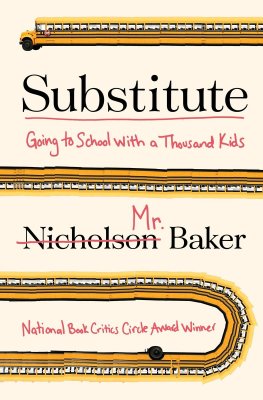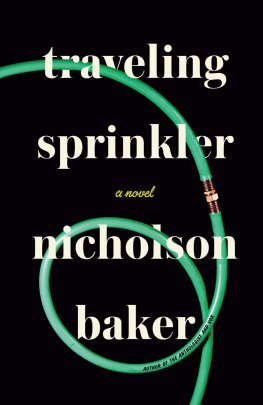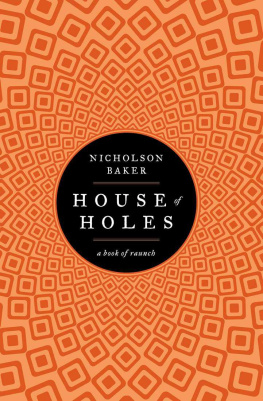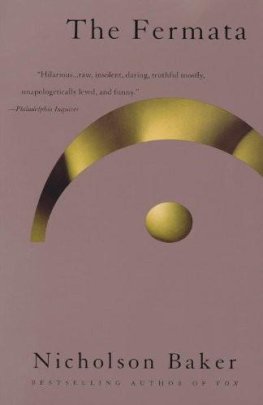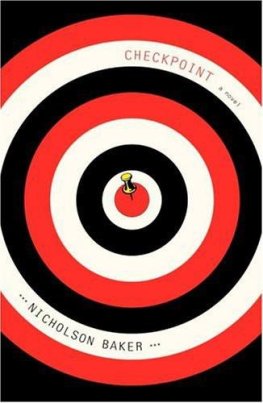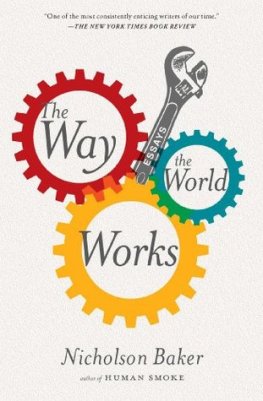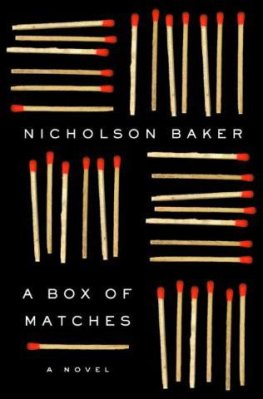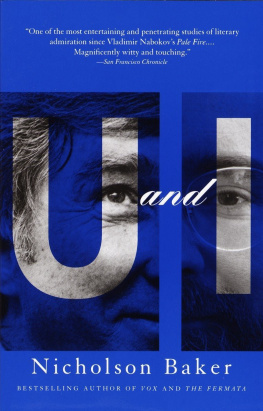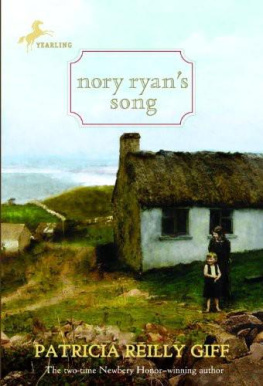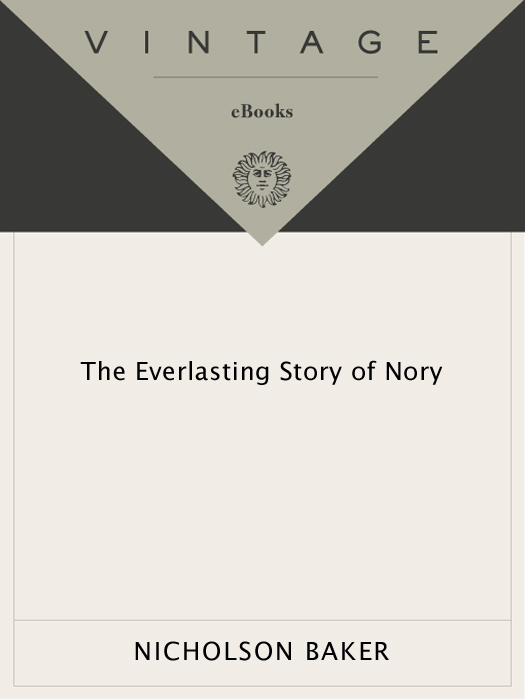Acclaim for NICHOLSON BAKERs
The Everlasting Story of Nory
Baker is a radiant admirer, a perceptive observer.[He] has given Nory a quirky and unmistakable flavor of her own.
Newsday
Delightful. Reading [it] is similar to listening to a series of piano etudes, each with its own theme playfully developed.
Time
The language is wonderful, Nory is a wonder too, but it is the secret life led in Norys stories that is the heart of this book.
Washington Post Book World
As well as being great fun to read, The Everlasting Story of Nory makes a sneaky argument about how literature helps us to inhabit our lives, make sense of our impressions, construct our very identities.
The Philadelphia Inquirer
Baker has once again created a poignant portrait of emotional intimacy, this time through the eyes of a child.
Bookpage
A one-of-a-kind creation, filled with laugh-out-loud pleasures and plenty of on-target insights into how children make sense of their worldand enhance that worlds meaning for grownups.
The Seattle Times
Nory is one of the most winning characters that I have met in a novel for some time.
The Boston Book Review

NICHOLSON BAKER
The Everlasting Story of Nory
Nicholson Baker was born in 1957 and attended the Eastman School of Music and Haverford College. He has published four novelsThe Mezzanine (1988), Room Temperature (1990), Vox (1992), and The Fermata (1994)and two works of nonfiction, U and I (1991) and The Size of Thoughts (1996). His essays have appeared in The New Yorker, The Atlantic Monthly, The New York Review of Books, Esquire, and The Best American Essays. He lives in Maine with his wife and two children.
Books by NICHOLSON BAKER
The Mezzanine
Room Temperature
U and I
Vox
The Fermata
The Size of Thoughts
The Everlasting Story of Nory
FIRST VINTAGE CONTEMPORARIES EDITION, APRIL 1999
Copyright 1997 by Nicholson Baker
All rights reserved under International and Pan-American Copyright Conventions. Published in the United States by Vintage Books, a division of Random House, Inc., New York, and simultaneously in Canada by Random House of Canada Limited, Toronto. Originally published in hardcover in the United States by Random House, Inc., New York, in 1998.
Vintage Books, Vintage Contemporaries, and colophon are trademarks of Random House, Inc.
The Library of Congress has cataloged the
Random House edition as follows:
Baker, Nicholson.
The everlasting story of nory / Nicholson Baker.1st ed.
p. cm.
I. Title.
PS3552.A4325E94 1998
813.54dc21 97-23942
eISBN: 978-0-307-80752-6
Author photographJerry Bauer
www.randomhouse.com/vintage
v3.1
For my dear daughter Alice, the informant
Contents
1. What She Liked to Do
Eleanor Winslow was a nine-year-old girl from America with straight brown bangs and brown eyes. She was interested in dentistry or being a paper engineer when she grew up. A paper engineer is an artist who designs pop-up books and pop-up greeting cards, which are extremely important to have easily available in stores because they make people happier in their lives. Lately Nory was in a stage of liking to draw pictures of Chinese girls wearing patchwork Chinese robes with their hair up in a little hat, or held on the side with a pin. She told a constant number of stories to herself in the car while they drove to Stately Homes. She also told them to herself in the bathtub or in the mirror. Sometimes she and her friends made up stories together, but that of course depended heavily on the friend. Another thing Nory liked doing was making up new designs of dolls that she wished you could have the opportunity to buy but you cant and probably never will.
For example, she drew a doll named Riena. Riena had straight hair parted on the side and puffy sleeves. She was not stretched out with a teenagery figure or short with a massive rounded head. Her hands and wrists could bend so she could hold a miniature carton of eggs, and every egg would have a realistic crack in the middle. You would help Riena put the egg down on the saucing pan, and shuffle it around, and after a while the egg would break by itself, because it would be filled with a special substance that expanded when you jostled it. A little folded-up rubbery thing that was an egg would goosh out, probably sunny side up, in the pan. Or you could have the second option of scrambled style, or an omelette. Riena had an apron with a pattern of spoons and forks. Sadly she didnt exist except as a drawing.
Nory was tall for her age, especially in the city of Threll, in England, where she and her mother, her father, and her brother, who was two, were living for a certain amount of time. There were quite a number of girls at her school, the Threll Junior School. She was hoping she would meet a good friend.
2. An Important Building
Threll Cathedral was the biggest thing in the city, by any means. It was an old cathedral that had a tower on it that had the unique ability to look close to you, and yet be very far away. Airplanes can do that, too. They seem close but arent, unless it isnt your lucky day. Inside the cathedral was almost as beautiful as outside except that there were modern things like wires and plugs that looked as if somebody had made a careless mistake, and modern-day loudspeakers up on the columns looking pretty indistinct. There were also some big tombs carved out of a certain kind of black and red stone that was not precisely frightening but was certainly alarming, because it was so vividly black, and of course there were corpses buried here and there in the walls or in the floor, some of which might be quite mummified. Saint Rufina, a famous woman who had been a very lovely young princess with long black hair who decided to give up her jewelry and become a nun and wear only the roughest clothes, and who died in a terrible way, by being eaten to death by wild dogs that ran through the church in the dead of wintertime, was in a special chapel all to herself, where one arm of her was set aside, that someone had scooped up and saved from the dogs, because everyone had loved her for her kindness and her healing ability. Nearby her chapel was a very tall thin window with pictures of tanks and warships and bombers on it. War pictures didnt seem like a perfect idea for a subject in stained glass in a famously holy cathedral, but on the other hand if youre going to have a stained-glass tank or battleship, this was probably the most beautiful tank you would ever find. The caterpillar treads were made of tiny scribs and scrabs of green and blue glass. The window was in honor of some of the people from the city of Threll who had died at war.
Way, way up in a tower above the stone floor of the Cathedral was the Jasperium. It was a kind of a stained-glass window in the form of a dome, right over where the two pieces of the cross met. A cathedral is usually arranged in the shape of a crucifiction, because Jesus died up on the cross. But why, Nory wondered sometimes, do they have to concentrate on the awful way he died? Why not have a cathedral in the shape of a G, for God, a squared-off G with an inner courtyard with a wishing well and herbs growing to make tea for the sick, for instance? A thousand upon a thousand pieces of green glass were up there in the Jasperium in a little circlea pretty big circle, actually, but it was little from the distance away you were standing when you looked up at it. When the sun was bright outside, it sent the green light down in a soft green stalk onto the floor of the Cathedral. They had a group of black chairs specially positioned so you could sit in a chair and wait for the green light to come over you like a spotlight on a slug, and supposedly at that moment you could almost think Gods thoughts. You were not really thinking Gods thoughts, of course, but the thoughts God wanted you to think. If you didnt believe in God, you were thinking what others thought of God, or what they thought God wanted them to think. At least you were thinking the Cathedrals thoughts in some fashion, which was a pretty worthwhile thing to be able to do on its own.


